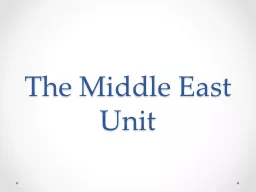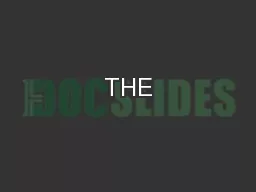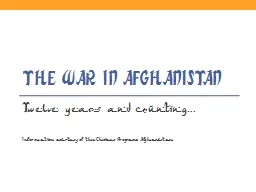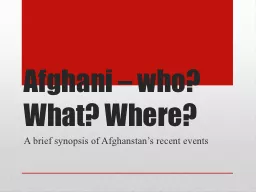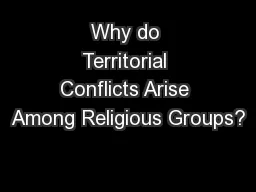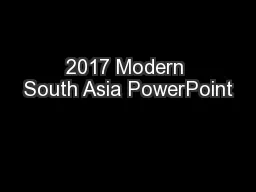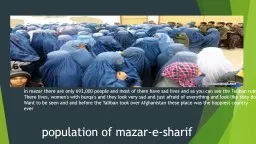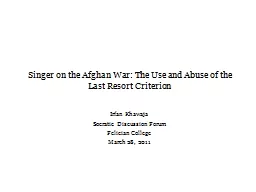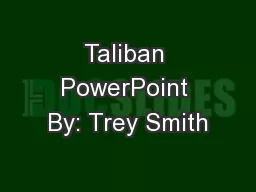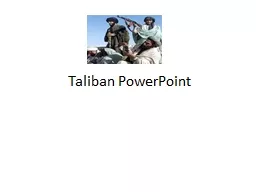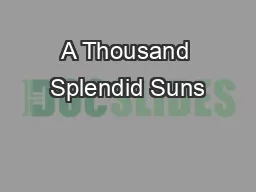PPT-The Taliban represents an ideology. What is that ideology?
Author : dshistory | Published Date : 2020-05-15
The Taliban represents an ideology What is that ideology brWhat were the circumstances for the Talibans established power What led to their powerbrDoes the Talibans
Presentation Embed Code
Download Presentation
Download Presentation The PPT/PDF document "The Taliban represents an ideology. Wha..." is the property of its rightful owner. Permission is granted to download and print the materials on this website for personal, non-commercial use only, and to display it on your personal computer provided you do not modify the materials and that you retain all copyright notices contained in the materials. By downloading content from our website, you accept the terms of this agreement.
The Taliban represents an ideology. What is that ideology?: Transcript
The Taliban represents an ideology What is that ideology brWhat were the circumstances for the Talibans established power What led to their powerbrDoes the Talibans belief system conflict with any other political belief systems Which HowbrWhat are the different crises that existed in this conflictbrDoes this ideology have links with other ideologies across the Middle East. Canada . in Afghanistan. Presentation by: Derakhshan Qurban-Ali. “. Defence, Diplomacy, and Development” to “Danger, Distrust and Disaffection. ”. A . review of lessons learned from Canada’s war in Afghanistan and its effect on Canadian . BREADWINNER. Characters. Parvana-Main Character. Mother. Father. Nooria-Parvana’s older sister. Maryam-Parvana’s younger sister. Ali-Parvana’s Younger Brother. Mrs.Weera-Family Friend. Taliban. Twelve years and counting. …. Information courtesy of the Choices Program: Afghanistan. The Invasion. President Bush decided that since the Taliban would not hand over bin Laden and would protect Al Qaeda in Afghanistan, the Taliban had to go. . A brief synopsis of . Afghanstan’s. recent events. Where?. Coup of 1973. The Kite Runner. . deals with the country of Afghanistan from the 1970s to the year 2002. Like all places, Afghanistan has a long and complicated history, but it came to international attention only after the coup of 1973. In order to orient ourselves, let us look at Afghanistan's geography. The nation is located in Central Asia and is made up of thirty-four provinces. The country's capital is Kabul, which is also the capital of the northeast province of the same name. Afghanistan means "Land of Afghan," Afghan being a name the Pashtun majority used to describe themselves starting before the year 1000. It is bordered by Pakistan, Iran, Tajikistan, Turkmenistan, Uzbekistan, and for a short distance, China.. HIST 251-01. May 03,2016. Life Under the Taliban. The Effects of Global Interference. Darryl Leflore. زندگی در زمان طالبان. . The Effects of Global Interference. Quick look back to the Cold War (1979-1989). Religion vs. Government Policies . Religious groups may oppose policies seen as contradicting their religious values.. Religion is element of cultural diversity that has led to most conflict in places.. Political Issues. Chapter 25 India. Religious Conflict and Terrorism in India. Religious Conflict and Terrorism in India. Since the 1947 Partition of India and Pakistan, there has been religious tensions in India between the Hindus and Muslims and the Hindus and Sikhs.. There lives, women's with burqa's and they look very sad and just afraid of everything and look like they do not . Want to be seen and and before the Taliban took over Afghanistan these place was the happiest country. Irfan. . Khawaja. Socratic Discussion Forum. Felician. College. March 28, 2011. My topic today (and what it doesn’t cover). My topic is Singer’s argument against the original U.S. decision to go to war against Al Qaeda and the Taliban in Sept 2001 based on his use of the last resort criterion of just war . and Devon Parks. Where did they come from ?. The . T. aliban is a group that was not well known until they were tasked with protecting a trade convoy.. When this job was finished they were recognized as the strongest faction.. The . T. aliban is a group that was not well known until they were tasked with protecting a trade convoy.. When this job was finished they were recognized as the strongest faction.. . Slide 2 picture. Contemporary Literature. Khaled Hosseini. Quick Facts. Conflicts: person vs. self, person vs. person, person vs. society. Point of View: third-person omniscient. Date of publication: 2007. Awards: National Bestseller, Amazon’s #1 book of the year, 2008 ALA Best Book for Young Adults. La gamme de thé MORPHEE vise toute générations recherchant le sommeil paisible tant désiré et non procuré par tout types de médicaments. Essentiellement composé de feuille de morphine, ce thé vous assurera d’un rétablissement digne d’un voyage sur . Best book to win online dice
Download Document
Here is the link to download the presentation.
"The Taliban represents an ideology. What is that ideology?"The content belongs to its owner. You may download and print it for personal use, without modification, and keep all copyright notices. By downloading, you agree to these terms.
Related Documents

